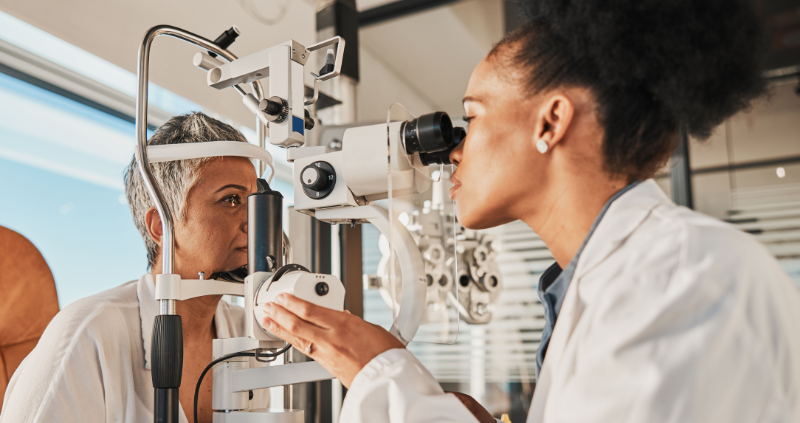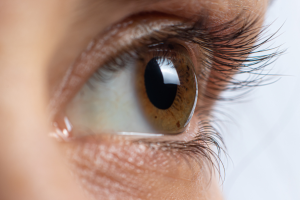
The Centers for Disease Control and Prevention (CDC) estimates that 38.4 million Americans, or 11.6% of the U.S. population, have diabetes. Among these patients, Type 2 diabetes is especially common and poses significant systemic health risks, including increased likelihood of cardiovascular disease, chronic kidney disease, neuropathy, and cognitive decline.
Ocular complications are also widespread and include diabetic retinopathy (DR), cataracts, and glaucoma. Diabetic retinopathy, the leading cause of blindness in adults of the working-age group in the western population, occurs when high blood sugar levels damage the microvasculature of the retina, resulting in a lack of blood flow and the abnormal growth of new blood vessels.
StatPearls (2023) Authors: Unnati V. Shukla, Centre for Sight new delhi. Koushik Tripathy2 , ASG Eye Hospital, BT Road, Kolkata, India
Recognizing Symptoms of Diabetes-Related Eye Disease
It is important for clinicians to help patients recognize early signs of eye disease to prevent progression. Patients with diabetes should be educated to monitor for:
- Blurred or distorted vision: Hyperglycemia can alter lens shape and increase refractive errors.
- Fluctuating vision: Vision may change as glucose levels fluctuate, impacting visual acuity.
- Vision loss: A consequence of advanced diabetic retinopathy and macular edema.
- Poor color vision: May be an early sign of retinopathy due to retinal changes.
- Dark spots or “floaters”: Cataracts, a common co-occurrence in diabetic patients, may result in clouding of the lens and vision obscurations.
- Photopsia: Flashes of light may indicate traction on the retina, often preceding a retinal detachment in severe proliferative diabetic retinopathy (PDR).
The Optometrist’s Role
Jessica Tarka, OD, and Carolyn Majcher, OD provided a comprehensive look at the Optometrist’s role in Review of Optometry. Paul Chous OD, FAAO and Jeffry Gerson OD, FAAO spoke at the American Academy of Optometry and provided an update on new developments in diabetes eye care.
Regular screenings and glycemic control are cornerstones of care for preventing vision loss due to diabetes. The American Diabetes Association and the American Academy of Ophthalmology recommend annual dilated eye exams for all diabetic patients. Studies have demonstrated that early detection and treatment of diabetic retinopathy reduce the risk of severe vision loss by 60-90%.
Scienfic Studies on Diabetic Retinopathy
- JAMA Ophthomology: 9.60 million people in the US (26.43% of those with diabetes) had diabetic retinopathy and 1.84 million people (5.06% of those with diabetes) had vision-threatening diabetic retinopathy in 2021.
- U.S. Centers for Disease Control and Prevention: Prevalence Estimates for Diabetic Retinopathy (DR). Among people with diabetes, the prevalence rate of DR was lowest among people younger than age 25 at 13.0% and highest among the 65-79 age group at 28.4%.
- American Academy of Ophthalmology: Diabetic Retinopathy: Causes, Symptoms, and Treatment, with explanations of the two stages of Diabetic Eye Disease.
Resources for Practitioners
Numerous resources support the ongoing management and education of patients with diabetes-related eye disease:
- American Diabetes Association: Provides risk calculators and educational materials to facilitate patient-provider discussions.
- National Eye Institute: Offers clinician-focused resources such as fact sheets, infographics, and webinars to support patient education on diabetes-related eye health.
- Prevent Blindness: The “Diabetes + The Eyes Educational Toolkit” offers evidence-based resources, including presentations and fact sheets, to enhance patient understanding and promote preventive measures.





